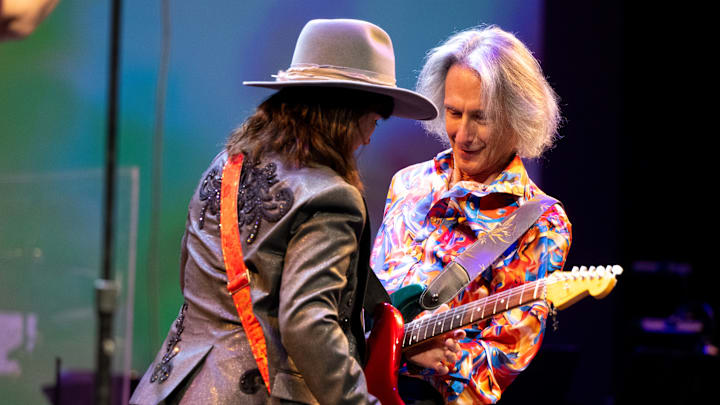The East Coast of the United States
The Remains by the Remains (1966)
The late summer of 1966 was a heady time for Barry Tashian and the Remains. A few weeks before their first and only album was released, they opened a show at Suffolk Downs Racetrack in Boston. On the bill that night were the Ronettes and the Cyrkle. The headliner was a quartet from across the pond – the Beatles.
Tashian put his band together along with some friends from Boston University, and they built up a following in Boston. Like most garage bands of the day, they began adopting a sound that recalled the Beatles, but Tashian, who went on to a successful career as a bluegrass and folk artist, had musical tastes that stretched a bit beyond typical garage rock. Which isn’t to say they couldn’t rock.
The Remains do a fine version of the Billy Vera song “Don’t Look Back,” later recorded by Robert Plant. They are at their most garage with their take on Bo Diddley’s “Diddy Wah Diddy,” with harmonica and guitar leading the way. Tashian’s own compositions – “When I Want to Know,” “Baby I Believe in You” – show his quirkier pop sensibility and is a nice balance to the raw garage rock that the Remains were mostly known for.
Projections by the Blues Project (1966)
The original Blues Project only lasted a brief time, but they filled Greenwich Village with an eclectic blend of blues rock with plenty of progressive touches. Much of the blues came from guitarists Danny Kalb and Steve Katz while the progressive impulse came from multi-instrumentalist Al Kooper. Kooper played with pretty much everybody over the years. He only stayed with Kalb and company long enough for one album, but it yielded one of the most accomplished garage rock albums of the decade.
It opens with a rocking “I Can’t Keep From Crying,” before shifting gears to Katz’s classically-inspired “Steve’s Song.” And then we’re rocking out to Chuck Berry’s trundling “You Can’t Catch Me.” Side one finishes up with some hard-edged blues from Muddy Waters – “Two Train Running.” Side two continues the variety, ranging from pop (“Cheryl’s’ Going Home”) to the Andy Kulberg showcase, “Flute Thing.” That’s right, a blues band with a flute. After Projections, the Blues Project splintered. Some elements would form Blood, Sweat, and Tears, while others kept recording as Blues Project.
Bitter Sweet by the Hangmen (1965)
The Hangmen came from the same Maryland suburbs that I did, but I was just a bit too young to have heard them play in Washington, DC when I was a kid. Their biggest hit, “What a Girl Can’t Do,” is about as good as ‘60s garage songs get, a perfect blend of pop and rock, with the requisite harmonica. Every local band tried covering it.
But the Hangmen had plenty of other fine songs. On Bitter Sweet, they open with a spacy version of the Roy Orbison classic “Dream Baby’ and close with a near-perfect cover of Van Morrison and Them’s “Gloria.” They do a sweet “Let It Be Me,” but tend to be at their best when rocking out on numbers like “Faces” and “Isn’t That Liz.”
Later, drummer Bob Berberich would join up with another kid from the DC suburbs, Nils Lofgren, in his band Grin. I cannot confirm what I once read in an online comment that the Hangmen used to arrive at gigs in an old black hearse – but I would like to believe it is true.
